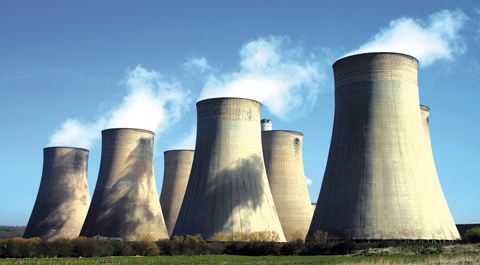In this case, a CFD model was used to examine potential scrubber designs along with a series of nozzle designs. The nozzle designs were selected for high capacity slurry flow to ensure our customer's process requirement.
We tested nozzle parameters, such as drop size, flow rate and velocity, in the lab prior to CFD testing to ensure the most accurate nozzle data was used. We then applied sorbent and SO2 chemical reaction models combined with nozzle features to simulate the process and determine uniformity, removal and system efficacy.


